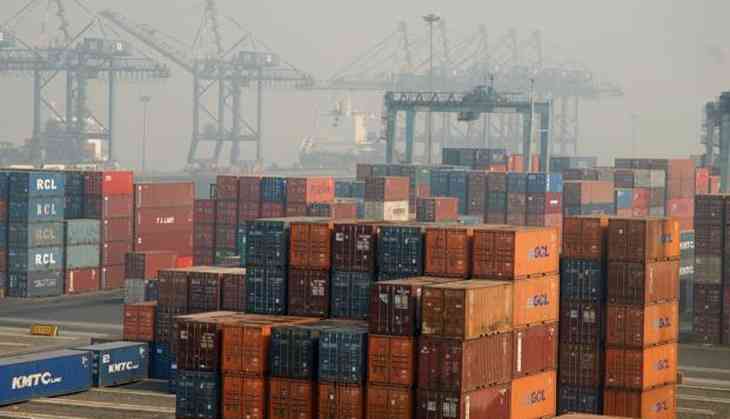Will rupee's gain be Indian exporters' loss?

Indian exporters have had some hard times over the past two years, with exports falling for 19 consecutive months till June 2016.
Even after that, recovery has been lacklustre, and does not project the prospect of a long term positive growth, in the backdrop of shaky recovery of the world economy.
A growth of above 27% in March 2017, was heartening but a sharp appreciation of the Indian rupee against the dollar is threatening to play spoilsport.
The cause of the problem
The Indian rupee has appreciated around 5% since the beginning of this year, and experts' forecast for the rest of the year is not good from an exporter's perspective.
Many analysts believe that the rupee will settle at Rs 63 against the dollar by the end of 2017.
Exporters have reached out to the government, asking for support.
“We are in a difficult situation. The price of steel has increased by 12-15%, and this has increased the price of the final product by about 5%. Engineering exports were under pressure between 2015 and 2016, and now the rupee value is hurting the recovery,” said SC Ralhan, president, Federation of Indian Export Organisations (FIEO).
FIEO has approached the government for incentives under the Merchandise Exports from India Scheme (MEIS) scheme.
Will government pay heed to exporters' demand?
In a conference held in Tokyo, Union Commerce Minister Nirmala Sitharaman hinted that the government expects the exporters to get used to an appreciated rupee.
“I would think it is important for us, and I am sure the exporters would be fairly clear in their head about it; currency-based lack of competitiveness is far lesser in the context of rupee strengthening for the Indian exporter, even though I grant it that strengthening of the Indian rupee of late is not against just one currency,” Mint newspaper quoted her as saying on 17 April.
Even as the government looks unwilling to do anything to provide a cushion to exporters in terms of the value of the Indian currency, the RBI is known to intervene in case of steep rise or fall in the value of the rupee. But in case the rupee settles at Rs 63-65 against the dollar due to high liquidity inflow in the Indian markets, the RBI may not be able to do anything.
“RBI intervention seems to be decreasing as forex markets and turnover are increasing quickly. We see this trend continuing, and might see the rupee appreciate up to 63 levels, this works favorably for foreign investors who are buying up Indian debt on the back of higher returns caused by a currency move in the rupee's favor,” Moneycontrol quoted Nikhil Kamath, co-founder & head of trading, Zerodha, as saying.
Is there a way out in the short to medium term?
DK Nair, former secretary general of the Confederation of Indian Textiles Industry, says: “As a manufacturing country, we are not competitive. Our productivity is very low compared to any of the Asian competitors, and a depreciated rupee is the only help that Indian exporters get to remain competitive. In case even that goes, it will actually affect our exports.”
Talking about short-term relief to exporters under MEIS, Nair says that by 2018, India has to weed out any sort of subsidy for its textiles sector under WTO guidelines. India now accounts for more than 3.25% of global textiles exports, and WTO rules prohibit India from subsidising its exports beyond 2018. Therefore, the government may be unwilling to make Indian exports competitive under MEIS for now.
As a long-term solution, Nair emphasises on the need to improve Indian infrastructure and electricity availability, to mitigate the risks of an appreciating currency.
On an average, industrial units in India face power cuts of up to 12 hours a day during summers – which last for more than six months – forcing exporters to rely on expensive diesel-powered generators to run manufacturing units.
Given the present scenario, the Indian exporters can only hope that the Indian rupee settles at the current level, and the government improves the domestic infrastructure before the currency appreciates further.
First published: 17 April 2017, 21:16 IST

